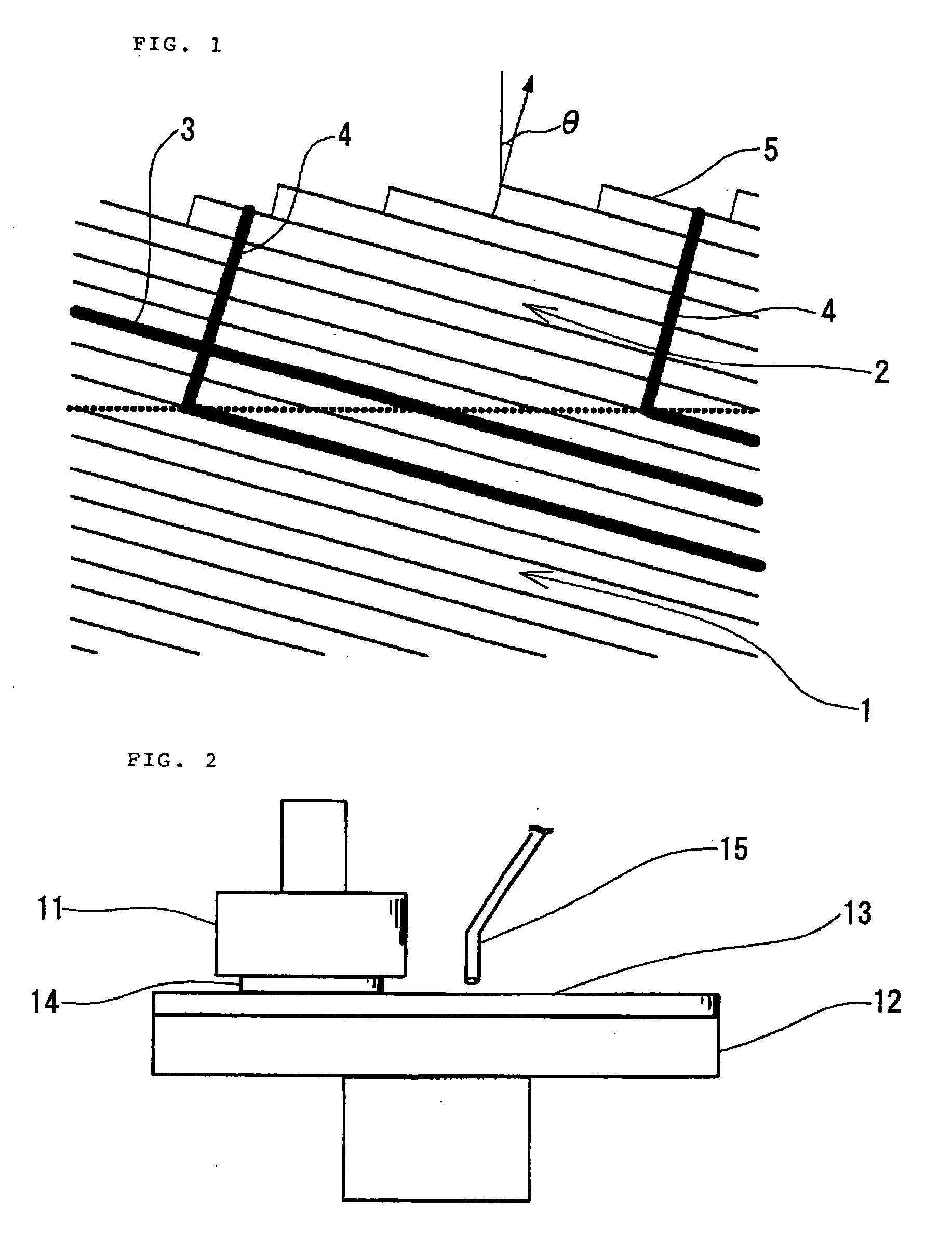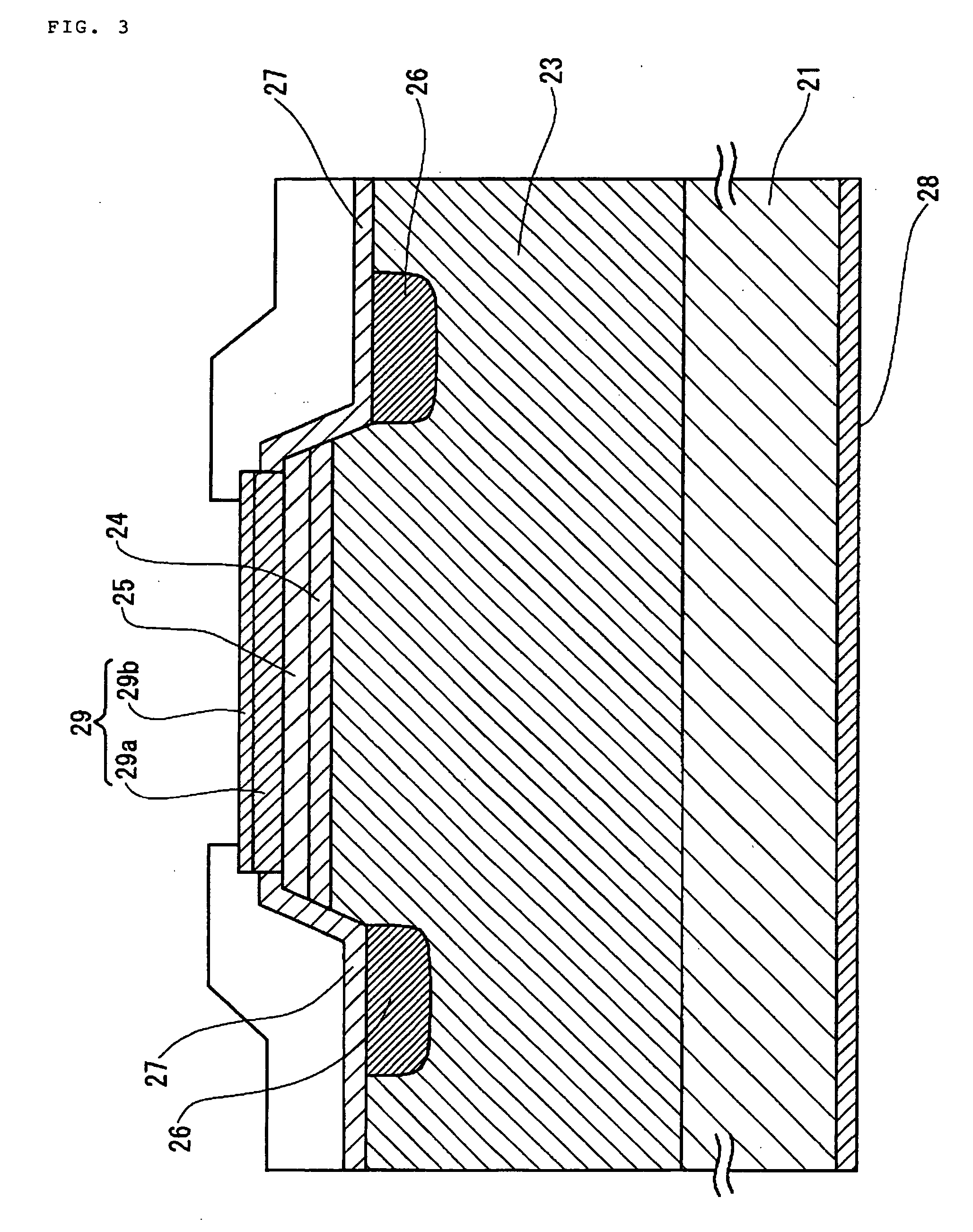Bipolar Semiconductor Device and Process for Producing the Same
a semiconductor device and bipolar technology, applied in the direction of semiconductor devices, electrical appliances, transistors, etc., can solve the problems of degrading the reliability of a power conversion device, increasing the loss, and degrading the forward voltage, so as to achieve the effect of propagating a basal plane dislocation and greatly reducing the dislocation of an epitaxial layer
- Summary
- Abstract
- Description
- Claims
- Application Information
AI Technical Summary
Benefits of technology
Problems solved by technology
Method used
Image
Examples
example 1
[0091] An ingot that was grown by an modified Lely method was sliced at an off-angle of 8° to the off-orientation of the [11-20] direction. The surface of the sliced substrate was smoothed in the specular morphology by mechanically polishing the surface with abrasive grains. By using a vertical type hot wall reactor, an etching treatment for 40 minutes was carried out at a temperature of 1400° C. and a pressure of 30 Torr to the formed n-type 4H—SiC (0001) substrate while supplying a hydrogen gas at a flow rate of 10 L / min. The surface roughness Rms of the substrate, which was measured by using the interatomic force microscope SPI3800N manufactured by Seiko Instruments Inc. after the treatment, was 0.25 nm (region of 10 μm×10 μm).
[0092] Next, the epitaxial growth of SiC from the surface of the substrate was carried out by the CVD method after the treatment. An epitaxial film with a film thickness of 60 μm was formed by the step flow growth for 4 hours at a temperature of 1545° C. a...
example 2
[0094] The SiC monocrystal substrate with the epitaxial film was obtained similarly to the Example 1 except that the surface of the substrate was treated by chemical mechanical polishing before carrying out a hydrogen etching treatment. The surface roughness Rms of the substrate, which was measured based on the method same as that of the Example 1 after the treatment, was 0.20 nm (region of 10 μm×10 μm).
[0095] The basal plane dislocation density in the epitaxial film, which was measured by using the molten KOH etching and X-ray topograph for the SiC monocrystal substrate with the epitaxial film that was obtained, was 60 cm−2 on the average.
example 3
[0096] An ingot that was grown by an modified Lely method was sliced at an off-angle of 8° to the off-orientation of the [11-20] direction. The surface of the sliced substrate was smoothed in the specular morphology by mechanically polishing the surface with abrasive grains. The formed n-type 4H—SiC (000-1) substrate was treated by chemical mechanical polishing and hydrogen etching and then an epitaxial film was grown similarly to the Example 2. The surface roughness Rms of the substrate, which was measured based on the method same as that of the embodiment 1 after the treatment, was 0.20 nm (region of 10 μm×10 μm).
[0097] The basal plane dislocation density in the epitaxial film, which was measured by using the molten KOH etching and X-ray topograph for the SiC monocrystal substrate with the epitaxial film that was obtained, was 20 cm−2 on the average.
PUM
| Property | Measurement | Unit |
|---|---|---|
| surface roughness Rms | aaaaa | aaaaa |
| off-angle | aaaaa | aaaaa |
| off-angle | aaaaa | aaaaa |
Abstract
Description
Claims
Application Information
 Login to View More
Login to View More - R&D
- Intellectual Property
- Life Sciences
- Materials
- Tech Scout
- Unparalleled Data Quality
- Higher Quality Content
- 60% Fewer Hallucinations
Browse by: Latest US Patents, China's latest patents, Technical Efficacy Thesaurus, Application Domain, Technology Topic, Popular Technical Reports.
© 2025 PatSnap. All rights reserved.Legal|Privacy policy|Modern Slavery Act Transparency Statement|Sitemap|About US| Contact US: help@patsnap.com



